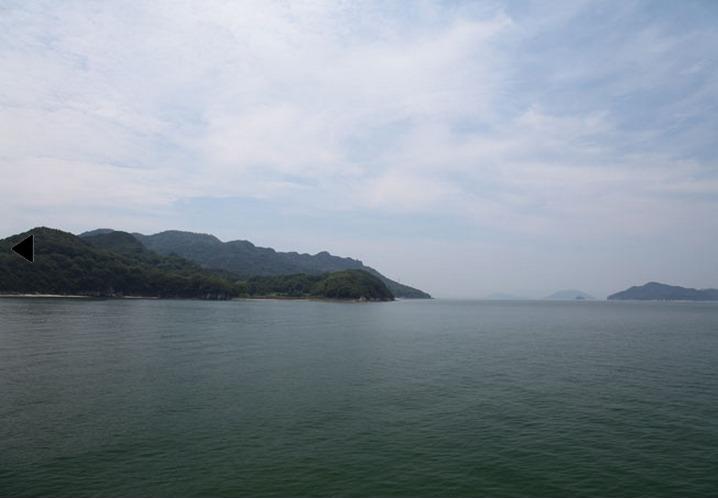Published in Broadsheet, Spring edition 2013
The Fukutake House Asia Art Platform – a collaborative exhibition that unfolded in Japan as part of this year’s Setouchi Triennale – saw food and contemporary art bridge the gap between the local and global.
The Seto Inland Sea might only be four-and-a-half hours by shinkansen from Tokyo, but there’s no trace of neon amid its expanse of ethereal blue. Although this archipelago plays host to tourist drawcards such as Naoshima – an island dotted with concrete installations by revered architect Tadao Ando – it’s mainly home to coastal fishing villages, dwindling industries and an ageing population on the brink of decline.
But the Setouchi Triennale, a contemporary arts festival funded by philanthropist Soichiro Fukutake, has shown that deterioration can prove a windfall for creative possibility. Unfolding over 12 islands in the Seto Inland Sea, the third incarnation of the triennale saw abandoned buildings and desolate spaces double as canvases for a series of ambitious exhibitions – an effort to reverse social and economic erosion with the transformative power of art and its associated economics.
In Japan, however, erosion and decay are two very different concepts. Fukuda Elementary School, an abandoned building on the postcard-perfect island of Shodoshima, might have closed its doors four years ago, but its perfectly preserved classrooms hint at weekend hiatus rather than a permanent desertion.
In July this year, the Fukutake House Asia Art Platform momentarily interrupted the elementary school’s stasis. A collaboration between Asialink and seven regional centres, the project saw artists such as Australia’s Jackson Slattery, Indonesia’s Irwan Ahmett, Taiwan’s Wei Lin Yang and Singapore’s Grace Tan create installations that breathed life into the school’s empty spaces, all the while mapping the relationship between globalisation and local culture.
“The biggest challenge was definitely the deadline,” admits Slattery, a Melbourne-born, Montreal-based artist currently on residency in New York. “Unfortunately, the nature of my work is quite labour-intensive. When I got back to New York, I had to lock myself in my studio for a month.”
This pressure had as much to do with theme as it did with time restraint. “This work on globalisation is a very, very big departure from my usual work,” says Slattery, who has made his name via technically profound watercolours that explore beauty, squalor and artifice. “I think that it’s impossible for an artist to say something new or interesting about it without jumping around conceptually.”
Slattery’s installation, Monument Within A Sculpture, took its cues from the granular aspects of globalisation, rather than the grandiose.
“Shodoshima was once famous for its granite, which was used to build and decorate many of Japan’s temples and palaces,” he says. “But the industry has been completely destroyed, unable to compete with the low cost of imported granite and marble from China. Brought over from Greece several decades ago, the olive industry, on the other hand, has been the island’s most lucrative. It’s also heavily marketed to tourists.”
Drawing on his previous work on found and conjured surfaces, Slattery built a structure in a room on the elementary school’s second floor, painted it to resemble imported Chinese marble and placed a hand-carved olive branch inside it. Powerful in its subtlety, this gesture challenges the idea that globalisation is an external force by highlighting the innumerable, accumulative ways we’re complicit in it.
The Fukutake House Asia Art Platform also proved that food can illustrate the connection between the local and the global as poignantly as art. The collaboration also saw seven chefs from the Asia Pacific region (including Andrew McConnell of Melbourne institutions Cumulus Inc., Cutler & Co. and the Builders Arms Hotel) present one-day regional food workshops to teach Japanese communities in wider Asia Pacific cuisine. Local volunteers would then prepare and serve the dishes in an onsite restaurant designed by Japanese architect Ryue Nishizawa for the course of the triennale.
“I spent two days prior to the workshop exploring the island, sourcing ingredients, visiting farmers markets and various fish vendors,” says McConnell, who travelled to Shodoshima with his Melbourne assistant John Paul Twomey. “There was a bit of pressure to find ingredients and put together a dish that was manageable, but I was really surprised by the quality there. I created a dish using local Japanese beans, prepared using French techniques as well as an aioli dressing and seared calamari seasoned with fennel and chilli.”
McConnell also says that Australian cuisine, which weaves together techniques and traditions from multiple countries, was a tailor-made treatise on globalisation. “It’s difficult to find a dish that’s distinctly Australian, so I created one that used various influences that highlighted what modern Australian cooking was about. I used French mayonnaise and cooked the local calamari by drawing on Spanish techniques. I explained that in Australia, we borrow from various places – this gave locals an insight into what the country was about.”
While Slattery says that the triennale has bolstered the region’s economy, the future is still cloaked in uncertainty.
“When we think about Japan, we think about the chaos of Tokyo or we think about manicured cherry blossoms. But in these little villages where we worked, it was really sad because you wouldn’t see anyone under 65 for days. And you just wonder what will happen in 10 years time.”
The Setouchi Triennale is an Asialink project supported by The Australia-Japan Foundation, The Australian Embassy, Tokyo and The Fukutake Foundation in Japan. It took place at Fukutake House Asia Art Platform from July 20 to November 4, 2013.
